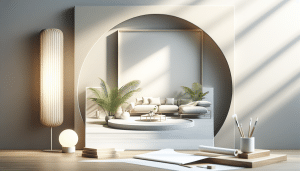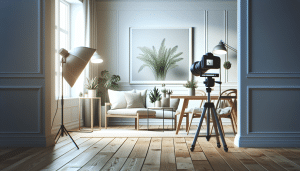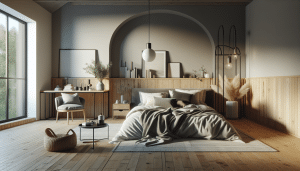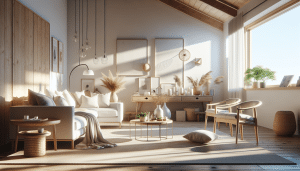Surprising Habits That Make Your Home More Relaxing
Samantha Lee September 15, 2025
Discover how small changes at home can create a noticeably more relaxing environment. This guide shares lifestyle habits, design secrets, and science-backed tips to help transform your living space into a true comfort zone—without costly renovations or dramatic overhauls.
Why a Relaxing Home Matters More Than You Think
The idea of home as a personal sanctuary is gaining traction globally. People now recognize their environment’s direct impact on well-being—mentally, emotionally, and even physically. Spaces that invite calmness don’t just look welcoming; they help reduce stress and rejuvenate the mind. Creating a relaxing home is no longer an exclusive luxury. Many are realizing it’s an essential ingredient in overall life satisfaction. In recent lifestyle research, spaces supporting positive habits have been linked to lower anxiety and increased happiness (see https://www.apa.org/topics/healthy-homes). This offers a compelling reason to evaluate your surroundings.
Today’s fast-paced world adds urgency to creating peaceful environments. Whether dealing with work-from-home routines or busy family dynamics, the state of your surroundings can either undermine or support daily resilience. Small shifts—like rearranging furniture for more natural light or adding inviting textures—can be surprisingly powerful. Interior design experts now recommend these as foundational moves for anyone seeking renewal within their space. Such advice is echoed across wellness articles and psychology journals that highlight the home’s effect on the nervous system.
It isn’t just about esthetics or decor. A truly relaxing home incorporates comfort, accessibility, and personal touches. Well-chosen indoor plants, calming color schemes, and inviting lighting play a significant role in everyday peace. Beyond that, embedding healthy routines—like unplugging screens in the evening or setting up a reading nook—helps establish rituals that combat stress. As research points, weaving these habits into your lifestyle makes relaxation attainable and sustainable—no matter your home’s size or style.
Design Strategies Backed by Science for Soothing Spaces
Not all design choices offer the same benefits. Studies show that natural light boosts mood, enhances focus, and even helps regulate sleep-wake cycles. Opting for sheer curtains, using mirrors to reflect sunlight, or placing frequently used spaces closer to windows can make rooms instantly more welcoming. A Harvard School of Public Health report found that increased daylight exposure indoors is linked to greater productivity and decreased depressive symptoms (see https://www.hsph.harvard.edu/news/hsph-in-the-news/indoor-light-health-benefits/).
Textures have an underrated influence over comfort. Tactile variety—such as soft throws, cushioned seating, or warm rugs—signal the brain to relax. Layering different fabrics adds warmth and dimension to any room. These subtle shifts in sensory experience promote a sense of security, which, according to design psychologists, can reduce perceived clutter and the tendency for mental overexertion. Even a single added tactile element can spark a notable difference in your relaxation response.
Color selection is another tool in the relaxation toolkit. Cool tones like blues, greens, and subtle grays are commonly associated with calmness. They evoke feelings of serenity and openness, helping counteract the chaos of outside environments. Painting one accent wall in a calming hue or introducing it through cushions and artwork can soften the room’s overall energy. In fact, color psychology studies consistently show these effects across age groups and diverse home settings (e.g., https://www.ncbi.nlm.nih.gov/pmc/articles/PMC5638187/).
Mindful Habits That Transform Daily Living
Establishing mindful routines can be transformative. Consider beginning each morning with a few minutes of quiet reflection—be it meditation, deep breathing, or gentle stretching. Designate a specific spot for this purpose, optimizing for comfort. Studies show that mindfulness habits practiced in the same environment foster quicker emotional resets. With consistency, your space becomes a cue for winding down or energizing, depending on the time of day.
Decluttering goes beyond neatness—it reduces visual noise. When everyday items have designated storage and excessive décor is minimized, the mind can better focus on rest and creativity. Organizational experts recommend breaking this process into approachable steps, making it easy to sustain even with a busy schedule. Investing in simple storage solutions, or repurposing baskets and boxes, helps maintain order without sacrificing style. Minimalism isn’t required; instead, thoughtful curation reigns.
Screen management is frequently overlooked but highly effective. Limiting electronic device use in restful spaces—like bedrooms or quiet nooks—reduces blue light exposure and the constant barrage of notifications that impede rest. Instead, swap out phone browsing for reading, journaling, or listening to calming music. The American Sleep Association has linked screen-free rooms to improved sleep hygiene and quicker sleep onset (see https://www.sleepassociation.org/about-sleep/sleep-hygiene-tips/).
Smart Use of Scent, Plants, and Music for Ambiance
Scent is a subtle but powerful cue for relaxation. Home fragrance—whether from essential oils, fresh flowers, or even baked goods—can lift mood and soothe anxiety. Aromatherapy research points to the relaxing effects of lavender, chamomile, and sandalwood (see https://www.ncbi.nlm.nih.gov/pmc/articles/PMC3612440/). A simple diffuser or a bowl of citrus peels on the kitchen table can foster a homey, inviting feel.
Living greenery has both esthetic and health benefits. Indoor plants purify air, add color, and are proven to lower stress levels. Even a few easy-care varieties like snake plant, pothos, or peace lily can transform a space. Gardening experts and NASA research suggest plants contribute to better air quality and improved psychological well-being, especially in urban settings with limited outdoor access. Their visual connection to nature provides a quiet anchor in busy routines.
Music and ambient sounds set the emotional tone. Curated playlists, sound machines, or gentle nature recordings can mask street noise, provide comfort, or spark positive memories. Experiment with different genres until you find what works for you. Psychology of Music research illustrates how gentle background music can lower heart rate and promote relaxation faster than silence (see https://academic.oup.com/jmt/article/49/3/289/6643459).
Personal Touches and the Power of Creative Expression
Personal meaning imbues a home with deep comfort. Surrounding yourself with photos, mementos, or artwork tells a story unique to your life. Personal items remind you of values, relationships, and experiences that support your emotional health. This isn’t about displaying everything at once, but rather curating items that genuinely spark joy or calm. The act of displaying cherished objects has ties to improved mood in studies from leading wellness organizations (https://www.mayoclinic.org/healthy-lifestyle/stress-management/in-depth/how-to-be-happy/art-20045714).
Creative hobbies reinforce the benefits of a well-designed home. Allocating small spaces for crafts, painting, music, or journaling keeps these activities front-of-mind and accessible. When creative tools are ready to use, the barrier to enjoying them drops. This supports a sense of accomplishment, flow, and well-being—all essential to relaxation. Many studies, including recent reports from the British Journal of Occupational Therapy, link at-home creative expression to decreased symptoms of anxiety and depression.
Even rearranging your furniture or switching up decor seasonally can refresh perspective. Regular changes ward off monotony and keep your space feeling alive. Let your environment reflect personal growth. It’s not about perfection, but about supporting evolving habits and interests. Over time, the sense of ownership and adaptability fosters a refuge you look forward to returning to daily.
Building a Routine for Enduring Serenity at Home
Consistent routines enhance the staying power of a peaceful home. Begin by establishing simple rituals—a daily cup of tea in your favorite chair, a five-minute nightly tidy, or gentle stretching before bed. These acts, though small, tell your brain to slow down and signify the transition from busyness to rest.
Involving others can deepen the experience. Family or roommates can share evening wind-down routines, such as a device-free hour or shared meals. Group rituals have been shown to strengthen relationship bonds and promote shared accountability for maintaining peaceful spaces. Community is an often-overlooked element in extended well-being at home.
Remain flexible. Life circumstances, schedules, and needs shift over time. The most enduring habits are ones that adapt as necessary. Evaluate your space and routines regularly, and seek feedback from those who share the space. By staying attuned to what feels good, your home can continue to be a place of deep relaxation, creativity, and joy over time.
References
1. American Psychological Association. (n.d.). Healthy homes and well-being. Retrieved from https://www.apa.org/topics/healthy-homes
2. Harvard School of Public Health. (n.d.). Surprising health benefits of indoor sunlight. Retrieved from https://www.hsph.harvard.edu/news/hsph-in-the-news/indoor-light-health-benefits/
3. Küller, R., Ballal, S., Laike, T., Mikellides, B., & Tonello, G. (2006). The impact of light and colour on psychological mood: a cross-cultural study of indoor work environments. Ergonomics, 49(14), 1496-1507. Retrieved from https://www.ncbi.nlm.nih.gov/pmc/articles/PMC5638187/
4. American Sleep Association. (n.d.). Sleep hygiene tips. Retrieved from https://www.sleepassociation.org/about-sleep/sleep-hygiene-tips/
5. Herz, R.S. (2009). Aromatherapy facts and fictions: A scientific analysis of olfactory effects on mood, physiology and behavior. International Journal of Neuroscience. Retrieved from https://www.ncbi.nlm.nih.gov/pmc/articles/PMC3612440/
6. Gick, M. L. (2022). Effects of music and ambient sound environments on relaxation and health. Journal of Music Therapy, 49(3), 289. Retrieved from https://academic.oup.com/jmt/article/49/3/289/6643459







